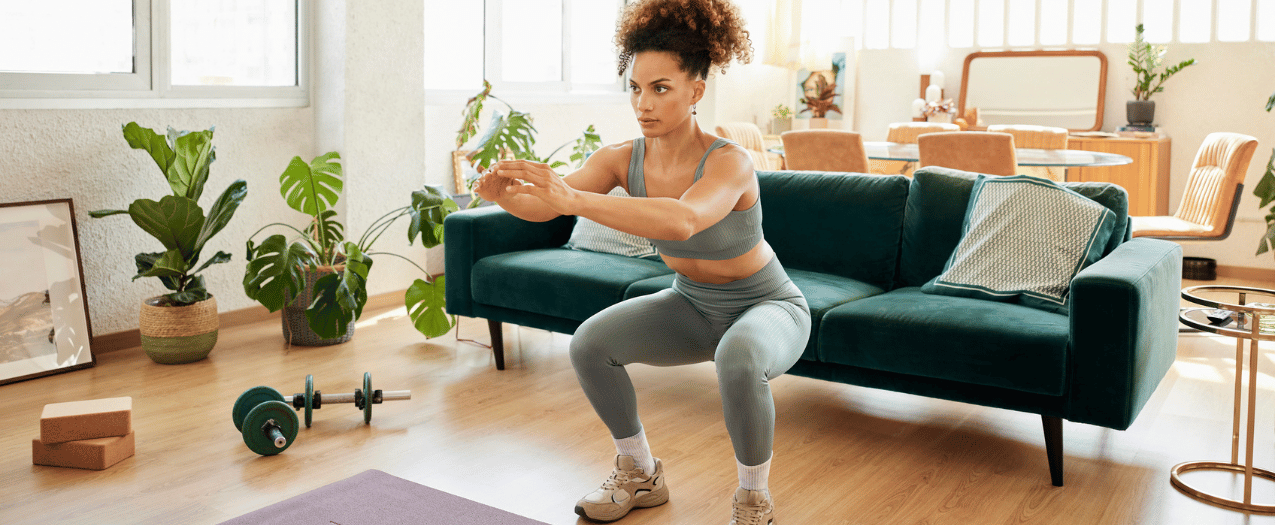
Urinary incontinence is the involuntary loss of bladder control that results in accidental urine leakage. It can range from the occasional small leaks that happen when you sneeze or laugh to a sudden urge to urinate that's difficult to control. Regardless of the type of UI you experience, several different treatment options are available to help you maintain a high quality of life. One of the most effective (and easiest) is engaging in pelvic floor exercises. Here, we'll explore some of the best pelvic floor exercises to help manage incontinence.
How Can Exercising Strengthen Your Pelvic Floor Muscles?
Exercising strengthens your pelvic floor muscles by targeting and engaging the muscles that support your bladder, bowel, and reproductive organs. Your pelvic floor muscles can weaken over time, like any other muscle group. In women, this may happen more often due to pregnancy and childbirth, but men can experience decreased pelvic muscle strength as well.
When you regularly utilize pelvic floor muscle training, you can increase the strength and endurance of the muscle fibers. Exercising also helps improve muscle control and coordination, allowing you to tighten or relax things (i.e., your bladder) when necessary. The more exercises you perform that engage the pelvic floor, the stronger your core becomes. Circulation also increases in the area, promoting muscle flexibility and bladder and bowel control over time. Your doctor can help you determine the best options for your needs and ensure you keep your pelvic floor muscles engaged when you first begin.
The Best Pelvic Floor Exercises for Incontinence
You can do plenty of simple exercises from the comfort of your home to strengthen your pelvic floor and fight urinary incontinence. The key to each is isolating and squeezing your pelvic floor muscles during the motion.
Finding the right muscles can be tricky if you've never exercised to strengthen your pelvic floor. Try to be patient, and if you have trouble doing Kegel exercises or pinpointing the right area, talk to your doctor. There are available tools to help you better understand how to identify and isolate the right muscles. For example, biofeedback training with a physical therapist can provide real-time feedback on your pelvic floor muscle activity. Sensors are placed on the body (often near the pelvic region) to monitor muscle contractions, and the biofeedback device provides visual or auditory signals that indicate whether your pelvic floor muscles are contracting correctly. This is a great option to help isolate and strengthen these muscles quickly and efficiently.
In the meantime, consider the following five exercises to strengthen the pelvic floor muscles and treat incontinence.
Kegel Exercises
Kegels are one of the most common pelvic floor exercises used to strengthen the muscles that support your bladder, bowel, and vagina (in women). They can help improve several different functions, including using the bathroom and even sexual intercourse. They can be performed using the following steps:
- Squeeze and lift your pelvic floor muscles as if you were trying to stop the flow of urine or prevent passing gas.
- Hold the contraction for about 3-5 seconds, being mindful not to hold your breath.
- Slowly release with a controlled motion.
- Repeat the contraction and relaxation, working up to 10-15 repetitions per set.
For the most significant benefit, try to do at least three sets of Kegels every day. Remember, you can do Kegels regardless of whether you’re sitting on the couch or standing in line at the grocery store, so they won't take any time out of your day.
Although most people assume that Kegels are only beneficial to women, men should also perform them for better bladder control. Regardless of gender, the important part about doing Kegels is to make sure you're targeting the right muscles. To help, think about how you would tighten your muscles if you needed to pass gas or stop urinating midstream. Women tend to feel a slight pulling in the vagina and rectum, while men feel a pulling in the anus and a slight movement of the penis.
Squeeze and Release
The squeeze and release exercise targets the pelvic floor muscles similarly to Kegels but focuses on building strength through alternating contractions. It helps control and endurance your pelvic floor muscles, which is important for managing incontinence. They can be performed using the following steps:
- Sit or lie down in a comfortable position.
- Squeeze the muscles in your pelvic floor as if you're trying to stop the flow of urine or hold in gas.
- Hold for 2-3 seconds, then relax and release the muscles completely.
- Rest for a few seconds, then repeat. Start with 10 repetitions and work up to more as your muscles become stronger.
Squats
Squats are a great way to engage the pelvic floor while also strengthening your lower body. Strong legs and core muscles provide better support for your pelvic floor. However, you need to be careful, as heavy squats performed without adequate core bracing can put pressure on the bladder and bowel. Start with light weights and work your way up to heavier ones. This will help strengthen your deep core muscles, pelvic floor muscles, and the muscles in your legs and buttocks. Squats can be done using the following steps:
- Stand with your feet shoulder-width apart, with your toes slightly turned out.
- Lower your hips as if you're going to sit in a chair, keeping your back straight and your knees behind your toes.
- Lower as far as you can comfortably go, then press through your heels to return to standing.
- Repeat for 10-15 repetitions. For added benefit, try to engage your pelvic floor muscles as you come back up from the squat, contracting them gently as you rise.
If you need support when practicing squats, do them on the Smith machine. This will give you the stability you need to help prevent injuries or accidents. Since these are also typically load-bearing exercises, talking to your doctor beforehand is essential.
Pelvic Tilts
Pelvic tilts are a simple but effective exercise that engages the muscles of the pelvic floor, core, and lower back. They help to improve posture, increase flexibility, and relieve lower back tension—all while strengthening the pelvic floor muscles. Plus, they're beginner-friendly and easy to do from the comfort of your home. To get the most out of your pelvic tilts, follow these steps:
- Lie on your back with your knees bent and feet flat on the floor, about hip-width apart. Rest your arms by your sides with your palms facing down.
- Gently tighten your lower abdominal muscles, drawing your belly button toward your spine.
- Slowly tilt your pelvis upward by pressing your lower back into the floor. You should feel a slight arch in your lower back as you tilt your hips.
- Hold this position for 5 seconds, then slowly release and return to the starting position.
- Repeat this motion 10-15 times, gradually increasing the time you hold the tilt.
Bird Dog
Another great option that targets your deep core is something called a bird dog. This core-strengthening exercise also engages the pelvic floor and lower back, making it great for all-around health and managing incontinence. Although it might sound easy in theory, try to focus on bracing your core and activating all of your muscles to feel its effectiveness. You can perform it using the following steps:
- Begin on your hands and knees in a tabletop position. Your wrists should be directly under your shoulders, and your knees should be under your hips. Keep your spine neutral and your core engaged.
- Slowly extend your right arm straight forward while extending your left leg straight back, keeping both limbs at the same level as your body. Ensure your hips remain level and don’t overarch your back.
- Hold this position for 3-5 seconds, keeping your core tight and your pelvic floor engaged. Slowly return to the starting position and repeat on the opposite side, extending your left arm and right leg.
- Perform 8-12 repetitions on each side, focusing on maintaining balance and control throughout the movement.
You can find even more downloadable pelvic floor exercises from the National Association for Continence here. To help you manage UI symptoms, Byram Healthcare carries several high-quality incontinence products. Contact us today to learn more about how we strive to empower our customers with the knowledge and resources they need to manage their health effectively.



